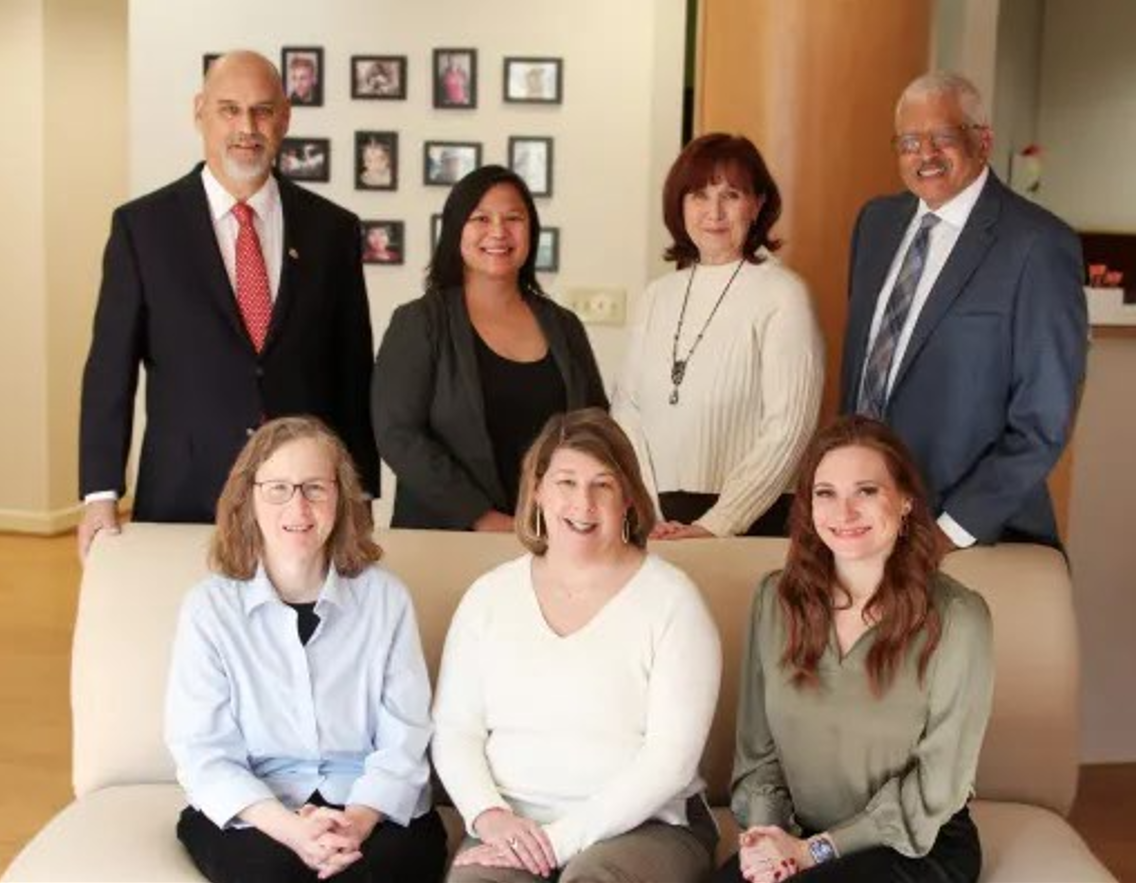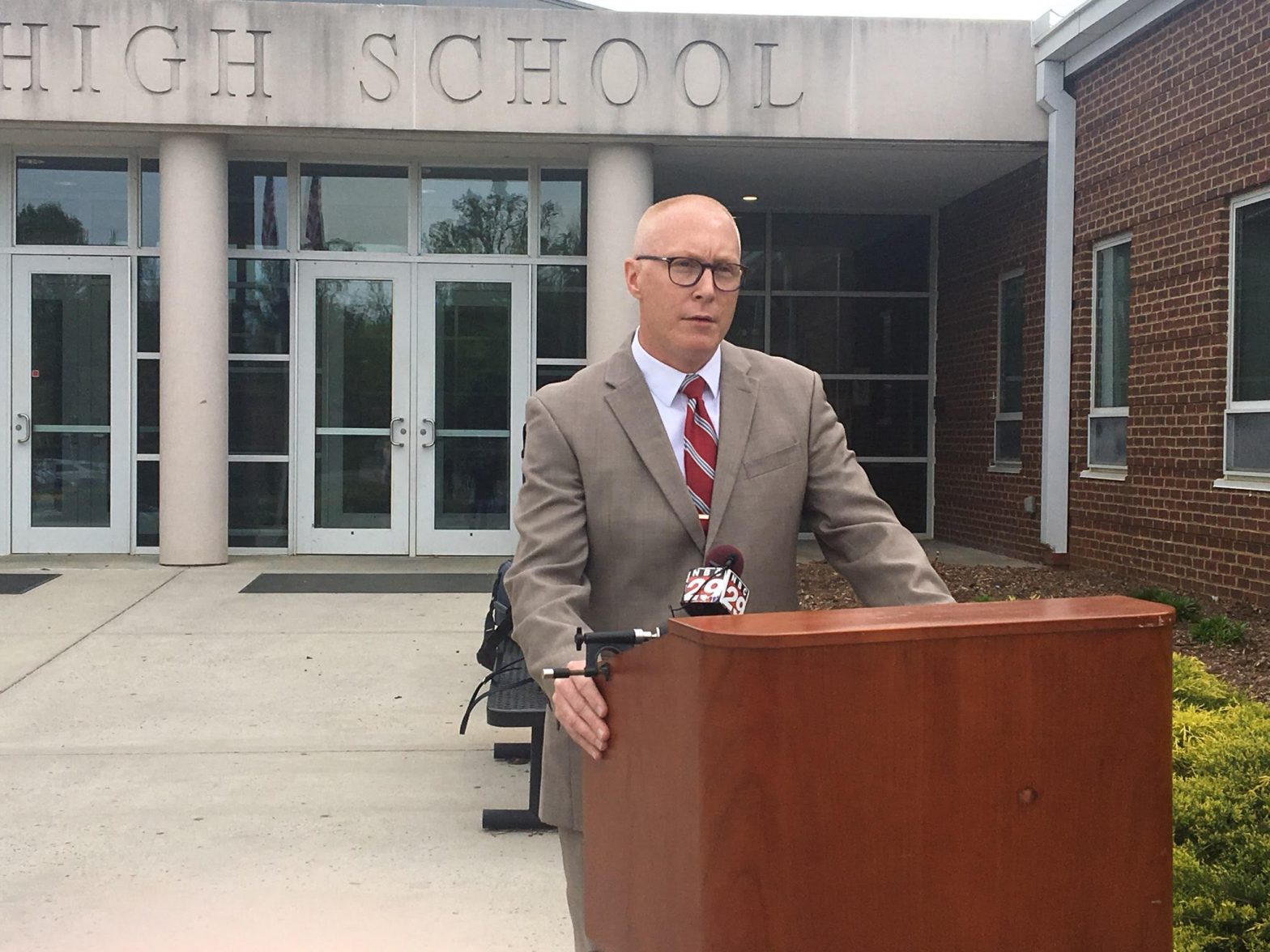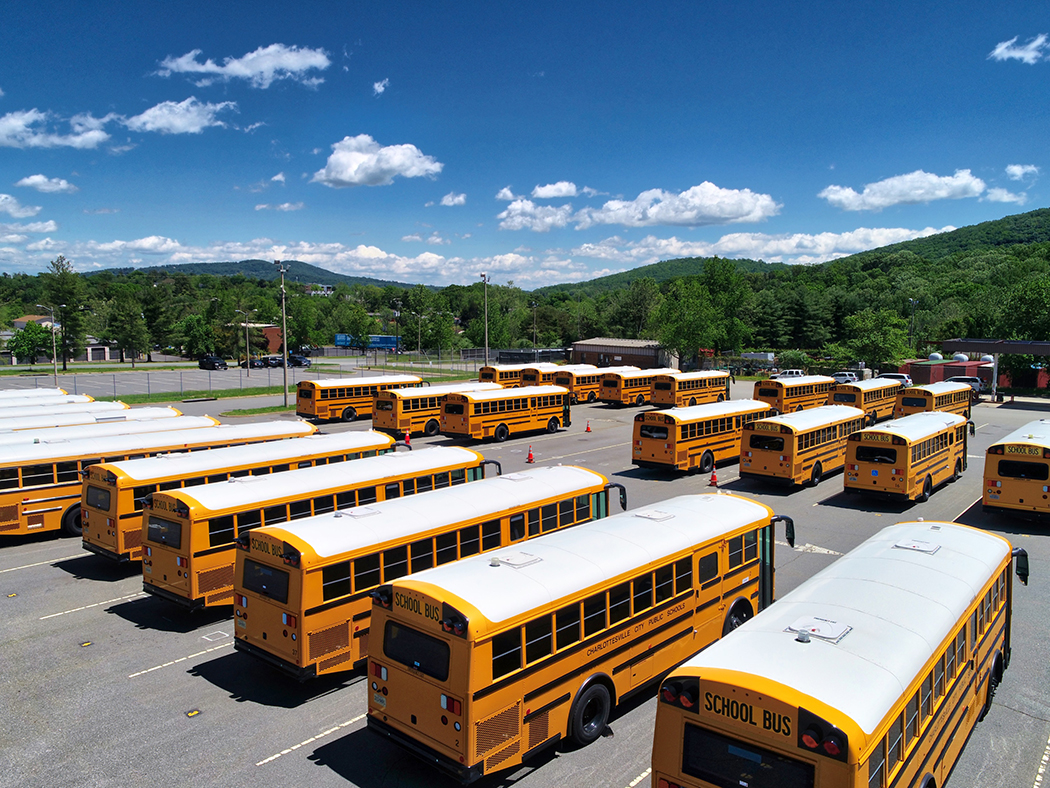In other words
While UVA leadership has continued to stress its willingness to engage with students over the ongoing conflict in Gaza, one such conversation did not proceed as planned on Thursday, May 9, when members of Apartheid Divest—a coalition of 43 student groups—walked out on a pre-scheduled meeting with UVA President Jim Ryan. More than 30 students stood in silence outside the meeting room, with their hands raised and painted red, as remarks and demands were read aloud to the UVA president.
Ryan listened to the statement in silence, leaving after the group started to chant, “35,000 dead and you arrested kids instead” and “Jim Ryan you can’t hide, you’re supporting genocide.”
In a statement to the Daily Progress about the decision to not move forward with the meeting as planned, Apartheid Divest member Josh Rosenberg said, “President Ryan’s actions were so inexcusable that there was no way we could have a good faith conversation with him after he refused to engage in good faith with students protesting peacefully for Palestine.”
Further division over how to best address UVA’s decision to call in police to break up the encampment arose on Friday, May 10, at a faculty senate meeting. Upper leadership, including Ryan, Longo, and Vice President and Provost Ian Baucom, attended the first portion of the gathering, and were grilled by several members and a small contingent of supporters among the faculty.
At the height of the conversation, multiple professors expressed their frustration with administration not dismissing the no trespass orders issued to protesters on the scene, especially those issued to faculty members and current students.
After leadership left, the senate passed an amended resolution calling for an external review of the events of Saturday, May 4, but declined to pass a resolution of solidarity.
Moving up

On May 13, Jamie Gellner started as the new Director of Transportation for Albemarle County Schools.
Prior to her current role, Gellner served as the Director of Special Projects, Program Evaluation, and Department Improvement for ACPS. She also has a background in transportation management, with experience in both Charlottesville and Fairfax.
“Our students deserve safe, reliable transportation services that support their education,” said Gellner in a release from ACPS. “I am eager to collaborate with students, families, and, of course, the dedicated staff of the Department of Transportation to implement innovative solutions and ensure every student arrives at school safely, on time and ready to learn.”
Gellner’s appointment comes at the tail end of a bumpy school year for bussing in the county, which experienced a driver shortage at the start of the 2023-24 school year. After three months, ACPS was able to expand bus services to all students requesting transportation outside of the walk zone.
Over the summer, Gellner will be working to minimize potential driver shortages that may pop back up this fall.
Cause for celebration
It’s graduation season in Charlottesville! Celebrations kick off at the University of Virginia on Friday, May 17, with events including valedictory exercises, the Donning of the Kente ceremony, and the Fourth Year Class Party. The main ceremonies will be held on Saturday, May 18, and Sunday, May 19, at 9am, with respective commencement speakers Daniel Willingham and Risa Goluboff. Expect traffic delays at the Corner, Downtown Mall, and just generally all of Main Street over the weekend.
Phoning in
The Charlottesville Police Department will resume responses for some non-emergency calls on June 1. Responses were temporarily paused in 2021 due to staffing shortages. Significant improvements to staffing will allow officers to respond to credit card fraud, false pretense, impersonation, larceny, vandalism, and lost property calls in person.
Compromise concessions
Gov. Glenn Youngkin signed a compromise budget passed by the Democratically controlled state legislature on Monday, May 13. While the new version includes funding for schools and pay increases for teachers and other state employees, other key Democratic priorities were scrapped on the bargaining table. Notable changes include the exclusion of language requiring reentry into the Regional Greenhouse Gas Initiative and the removal of any tax increases or decreases.














